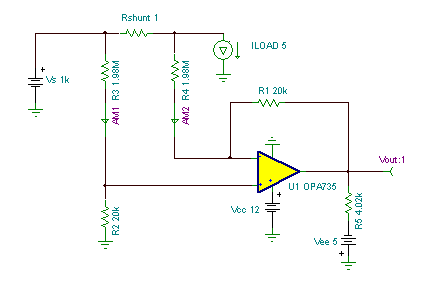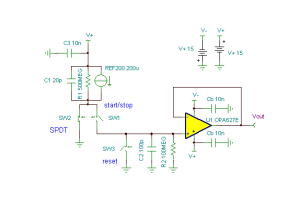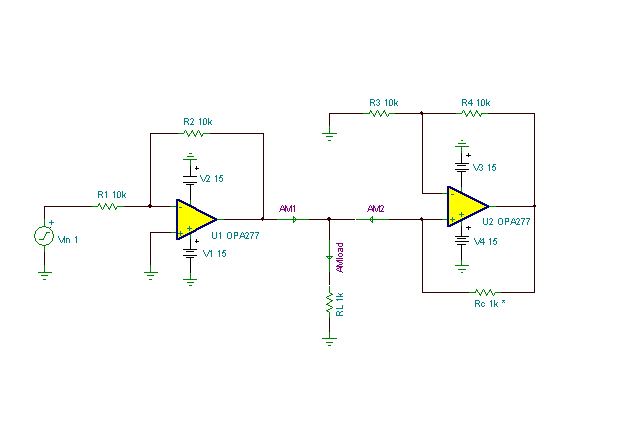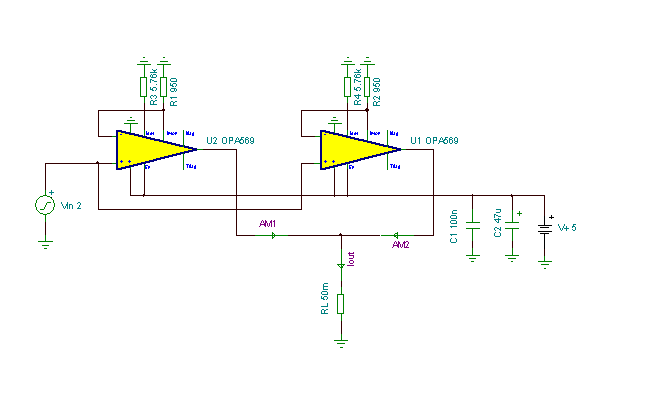High Common Mode Voltage Difference Amplifier circuit
Achieving a high common mode voltage differential amplifier requires a very high attenuation resistor network.
To minimize op amp input offset voltage and drift errors, an autozero type is used– OPA735. An OPA335 can be used on a 5V supply. Common- mode rejection is critically dependent on the ratio matching of R3:R2 & R4:R1. These should be matched to extremely tight tolerances. Power dissipation in R3 & R4 are significant. Bypass capacitors are not shown. (Circuit is created by Neil P. Albaugh TI – Tucson)
High Common-Mode Voltage Difference Amplifier circuit:

Creation and Simulation of a 1 kV High Common-Mode Voltage Difference Amplifier circuit
Watch our tutorial video to learn how to create and analyze this circuit with TINA off-line version or on-line with TINACloud
Also if you download the FREE trial demo of TINA Design Suite you can not only find and run this circuit but you will also get
- An immediate 20% discount from the offline version of TINA Design Suite
- Free license for your second computer, laptop etc.
- One year free access to TINACloud (the cloud-based, multi-language, installation-free online version of TINA now running in your browser anywhere in the world)
Click here to download the FREE trial demo of TINA Design Suite
Michael Koltai
www.tina.com




